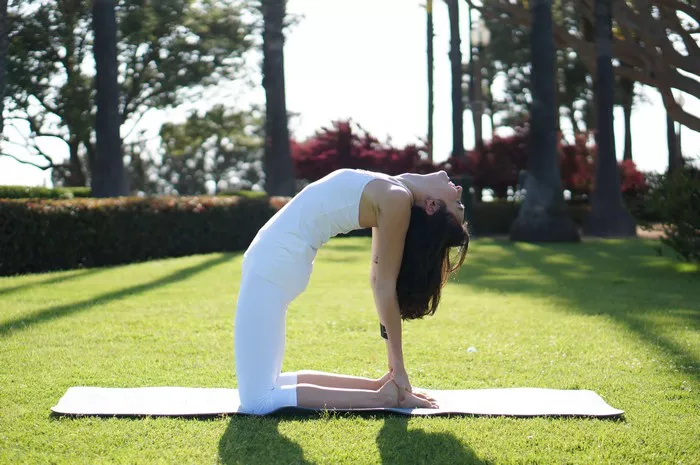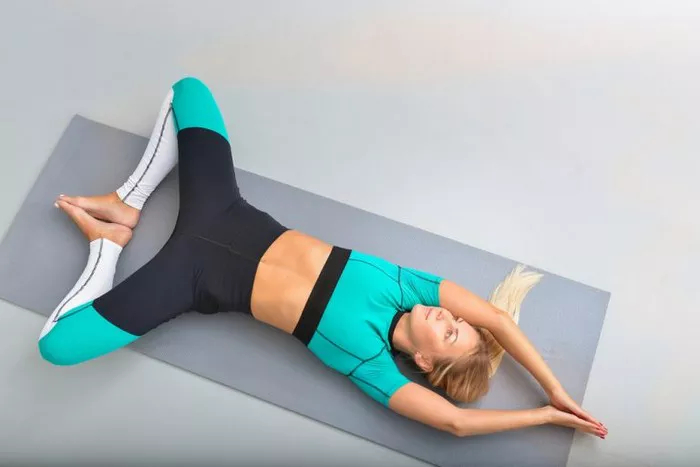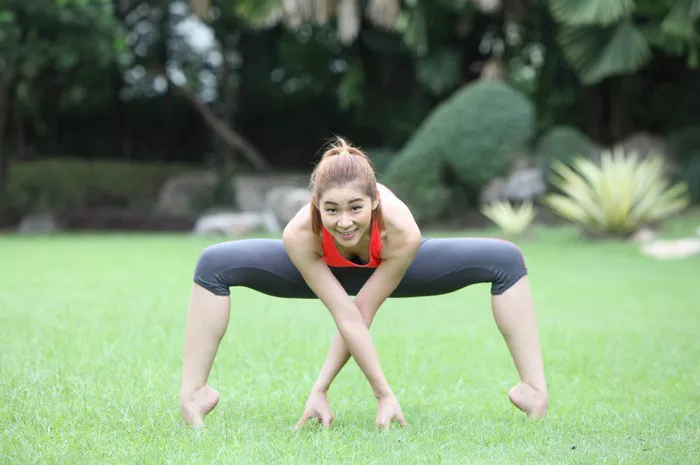Yoga is a practice that promotes physical flexibility, mental clarity, and emotional balance. While many people think of yoga as an individual practice, there are also poses that can be done with a partner. Partner yoga is a beautiful way to connect with another person, whether it’s a friend, spouse, or family member, while enjoying the benefits of yoga.
In this article, we’ll explore beginner-friendly yoga poses for two people. Whether you’re new to yoga or looking to practice together with someone else, these poses will help you build trust, increase strength, improve flexibility, and deepen your connection. We’ll break down each pose, explain the benefits, and offer tips to make each pose safe and enjoyable.
Why Practice Partner Yoga?
Before diving into the specific poses, it’s important to understand why practicing yoga with a partner can be so beneficial.
1. Bonding and Connection
Partner yoga creates an opportunity to connect with another person in a deep and meaningful way. You’re not just practicing the physical postures; you’re also building trust and communication. Partner yoga encourages teamwork, mutual support, and shared focus.
2. Increased Awareness
When practicing yoga on your own, it’s easy to lose track of alignment or to push too hard in certain poses. With a partner, you have a built-in system of support. You can adjust your form and posture based on your partner’s feedback, and they can help you deepen your stretches safely.
3. Increased Fun and Motivation
Practicing with a partner can be more fun and motivating than practicing alone. You can encourage each other, share a laugh, and create a light-hearted atmosphere. It can be especially helpful for beginners, as the support of a partner can reduce feelings of frustration or uncertainty.
4. Enhanced Stretching and Flexibility
Some yoga poses are much more effective when done with a partner. With two people, you can use each other’s weight and resistance to deepen stretches and improve flexibility.
Guidelines for Practicing Partner Yoga
Before we dive into the specific poses, let’s go over some general guidelines to ensure a safe and effective partner yoga practice.
1. Communication is Key
Communication with your partner is essential. Whether you’re adjusting your position or deepening a stretch, always check in with your partner. Ask if they’re comfortable and let them know if you need them to adjust their movements. It’s important to communicate throughout your session to ensure both of you are safe and comfortable.
2. Start Slow
If you’re new to partner yoga, begin with simple and gentle poses. There’s no rush to move on to more complex postures. Starting with beginner-friendly poses will give you both time to understand each other’s body mechanics, balance, and rhythm.
3. Safety First
Although yoga is meant to be a safe and healing practice, some poses can strain your muscles or lead to injury if done incorrectly. Always warm up before starting, and avoid pushing beyond your limits. If you or your partner feel any sharp pain, stop and reassess the pose.
4. Use Props
If needed, use yoga props like blankets, blocks, or straps to help modify poses or support each other. Props can make a pose more accessible or allow for deeper stretching without straining your body.
5. Trust Your Partner
Trust is the foundation of partner yoga. Some poses require your partner to support your weight or help you maintain balance. It’s important to trust each other and rely on each other’s strength and stability.
Now that you have a basic understanding of what partner yoga involves, let’s take a look at some beginner-friendly poses that you can try with a partner.
1. Partner Forward Fold (Paschimottanasana Variation)
How to Do It:
Stand facing each other with a comfortable distance between you.
Both partners extend their legs straight out in front, ensuring that their feet are about a foot apart.
On an inhale, both partners lift their arms up and, on an exhale, fold forward, reaching for each other’s wrists or forearms.
Your partner can pull gently on your arms to help you deepen the stretch.
Stay here for 3–5 breaths, then slowly release.
Benefits:
- Stretches the hamstrings, lower back, and shoulders.
- Improves flexibility and range of motion.
- Promotes relaxation and deep breathing.
Tips:
- Keep your back as straight as possible during the forward fold to avoid straining your lower back.
- Use your breath to deepen the stretch, but do not force your body into the position.
2. Partner Tree Pose (Vrksasana Variation)
How to Do It:
Stand facing each other, about 3 feet apart.
Shift your weight onto one leg and lift the opposite foot, placing it either on your calf or thigh (avoid the knee).
Bring your palms together in prayer position at your chest, or extend your arms overhead.
Gently press your palms together with your partner’s palms to help maintain balance.
Hold for 3–5 breaths, then switch sides.
Benefits:
- Improves balance, focus, and stability.
- Strengthens the legs and core.
- Enhances coordination and teamwork.
Tips:
- Make sure your standing leg is firm and active to avoid wobbling.
- Engage your core to help with stability.
3. Partner Downward Dog (Adho Mukha Svanasana Variation)
How to Do It:
Start in a tabletop position with your knees and hands on the floor.
One partner lifts their hips into the air, creating an upside-down “V” shape with their body (downward dog).
The second partner can come into their own downward dog position, facing the first partner, and gently step their feet onto their partner’s thighs for support.
From here, both partners can either hold each other’s ankles or simply focus on holding the pose.
Benefits:
- Strengthens the arms, shoulders, and core.
- Stretches the hamstrings, calves, and back.
- Increases flexibility and coordination.
Tips:
- Ensure both partners have their hands and feet grounded firmly to avoid strain.
- Work together to ensure that one partner’s body weight is not too much for the other.
4. Partner Seated Forward Fold (Paschimottanasana)
How to Do It:
Sit facing your partner with your legs stretched out in front of you.
Both partners reach out and hold hands or wrists.
Inhale and sit tall, and as you exhale, begin to fold forward.
Use the connection with your partner to deepen the stretch, pulling gently on each other’s arms or wrists.
Benefits:
- Stretches the hamstrings, calves, and back.
- Improves flexibility.
- Promotes relaxation and calmness.
Tips:
- Ensure that your spine is long as you fold forward.
- Do not force yourself to touch your toes; simply focus on the length of your spine.
5. Partner Boat Pose (Navasana)
How to Do It:
Sit facing each other, with your knees bent and feet flat on the floor.
Hold hands and slowly lift your feet off the floor, bringing your knees toward your chest.
Balance on your sitting bones and lift your feet until your legs form a “V” shape.
Engage your core and keep your spine straight.
Hold for 3–5 breaths, and then slowly lower your feet.
Benefits:
- Strengthens the core and hip flexors.
- Improves balance and coordination.
- Enhances concentration and focus.
Tips:
- Keep your chest open and your back straight. If needed, keep your knees slightly bent.
- Engage your core muscles to avoid straining your lower back.
See Also: What Are the Different Types of Yoga Poses?
6. Partner Child’s Pose (Balasana Variation)
How to Do It:
Start by sitting back on your heels with your knees spread wide and your arms extended in front of you.
The first partner lowers their torso to the floor in child’s pose, while the second partner kneels behind them.
The second partner can place their hands on the first partner’s lower back, gently applying pressure to deepen the stretch.
Breathe deeply, and relax into the posture for a few moments.
Benefits:
- Stretches the lower back, hips, and thighs.
- Calms the nervous system.
- Relieves tension and stress.
Tips:
- If you feel any discomfort, adjust the amount of pressure or depth in the pose.
- Focus on your breath to help deepen the relaxation.
Conclusion
Partner yoga is a wonderful way to practice with a loved one, friend, or fellow yoga enthusiast. It offers numerous benefits, including improved flexibility, balance, and strength, as well as a deeper sense of connection and trust. By starting with these beginner-friendly poses, you can experience the joy of yoga while enhancing your relationship with your partner.
Remember that yoga is not about perfection but about progress. As you practice these poses, focus on being mindful and present with your partner. Enjoy the process, and don’t forget to communicate and support each other throughout your practice. Whether you’re looking to deepen your connection with your partner or simply have fun together, partner yoga is a beautiful practice that can bring joy and peace to both mind and body.
You Might Be Interested In:






















